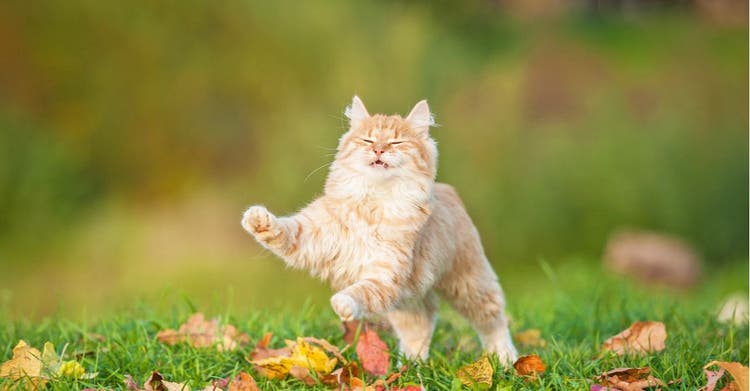
Why Do Cats Land on Their Feet?
There’s lots of myths and legends about cats that have been repeated through time. Cats have 9 lives, cats are good luck, cats are unlucky, a cat’s behavior can predict the weather, the list goes on and on. Another one of the more repeated bits about cats is that they always land on their feet. Is that true?
To an extent. Our feline friends are incredibly agile creatures and usually land on their feet when falling from a higher point. But there is a limit to that. This post will break down how cats pull off such acrobatic feats.
The Science of Cats
Cats and humans have been living together for about 10,000 years. Their unique mysterious nature and their athletic prowess has long fascinated humans. In Ancient Egypt, there were several cat-like gods and goddesses. Cats were so beloved by Ancient Egyptians, that after they died some were mummified so that they could spend eternity with their owners.
Scientists have also long shown a curiosity in studying cats. In the late 19th century, a French scientist and filmmaker named Etienne Jules Marey set out to discover how it was that cats seemed to always land on their feet. To do so, he used his chronophotographic camera which could capture 60 frames a second, which was quite the feat in those days. The frames would allow Marey to study the specific movements cats made as they adjusted to land on their feed.
What did he learn?
That the ability was a process, not a singular action. It all starts in the cat’s ear as the vestibular apparatus within the ear serves as the balance and orientation compass for a cat. It alerts the rest of the cat’s body of which direction is up and down. When a cat is falling, it signals quickly to that they’re not facing the right way, triggering the process. First, the cat will twist its head to find a safe place to land.
Next, the cat’s spine takes its turn. Cats have a unique skeletal structure consisting of no collarbone and an unusually flexible spine with 30 vertebrae. For context, humans have 24 and dogs have 36. Cats have a low body-weight ratio, so they’re able to slow the velocity in which they’re are falling. The flexibility of the cat’s spine allows for the cat to quickly correct its position during freefall. When the spine is twisting, the cat’s back arches, and their front paws move jump below their face to protect their head from impact. During the final landing, the cat’s back leg joints absorb the landing.
How High Can Cats Fall?
A cat’s ability to right itself midair and safely land on its feet is certainly impressive, but certain heights can be dangerous, even fatal, for a cat. Typically, felines that fall from greater heights, such as more than five floors, tend to suffer less severe injuries than those falling from just a couple stories. The longer freefall gives cats more time to right themselves and position their bodies correctly.
There have been some remarkable examples of cats landing from tremendous heights. In Boston, a kitty defied the odds and landed safely from a frightening 19-story fall.
Keep Your Kitty Safe
While it can be fascinating to see our cats leap of high book shelves or staircases and stick a perfect landing, cat owners should be mindful of their cats health and try to avoid giving them the temptation to make mighty leaps. One place to keep an eye out is windows.
As all cat owners can testify, kitties love to perch up on window seals and gaze out at the great outdoors. Birds, bugs, squirrels, rabbits, and pedestrians are fun for cats to look at. However, if the window is open or the screen is not secure, sometimes cats can be tempted to go from observer to participant. If that window is in the top floor of your home, or if you live in an apartment window, the distance your cat will free fall towards the ground could present a problem for them. Make sure to keep your windows closed, or, if they’re open to let in a breeze, make sure that your window screens are secure enough that your kitty won’t be able to leap out.
Learn more about your cat’s safety at PetPlace!